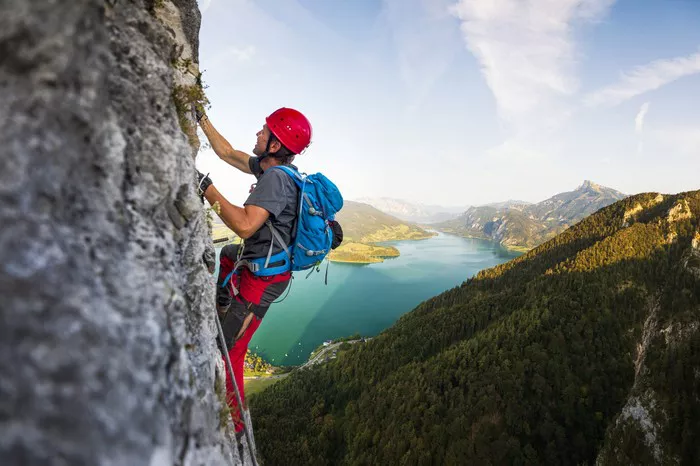In the realm of climbing, where each ascent is a testament to human perseverance and skill, the importance of grip cannot be overstated. Whether scaling sheer rock faces, navigating icy peaks, or maneuvering through indoor climbing gyms, climbers rely heavily on their grip to secure their progress. But what exactly do climbers use for grip while climbing, and how do they optimize it to conquer challenging terrains? In this comprehensive guide, we delve into the diverse array of tools and techniques climbers employ to maintain their grip and ascend to great heights.
Understanding the Basics of Grip in Climbing
Before exploring the tools climbers use for grip, it’s essential to grasp the fundamentals of grip in climbing. Grip refers to the ability to hold onto surfaces securely, enabling climbers to support their body weight and maneuver effectively. In climbing, grip can be categorized into two main types: friction and frictionless.
Friction grip relies on the interaction between the climber’s hand or foot and the climbing surface. It is essential for maintaining stability and control, particularly on textured surfaces such as rock, where microscopic irregularities provide frictional support. Frictionless grip, on the other hand, involves techniques and tools that reduce or eliminate reliance on surface friction, often employed in situations where friction alone is insufficient to support the climber’s weight, such as on smooth or icy surfaces.
Tools for Friction Grip
1. Climbing Shoes:
One of the most fundamental tools for climbers, shoes are specifically designed to optimize grip on various climbing surfaces. Featuring sticky rubber soles with specialized tread patterns, climbing shoes maximize surface contact and friction, allowing climbers to edge, smear, and toe-hook with precision. Different types of climbing shoes cater to different climbing styles and preferences, ranging from aggressive downturned shoes for steep sport climbing to flat, stiff shoes for crack climbing.
2. Chalk:
A ubiquitous accessory in the climbing world, chalk plays a crucial role in enhancing grip by absorbing moisture and oils from the climber’s hands, thus reducing slippage. Climbers typically carry chalk in a chalk bag attached to their harness, applying it to their hands as needed during climbs. Additionally, liquid chalk, which consists of chalk suspended in alcohol or other drying agents, offers longer-lasting grip enhancement and is particularly useful in humid conditions.
3. Hand Care Products:
Maintaining healthy skin is essential for optimal grip in climbing. Climbers often use hand care products such as climbing balms and moisturizers to prevent skin dryness, cracking, and abrasions. These products not only promote better grip by preserving skin integrity but also aid in recovery from minor injuries and calluses.
4. Technique:
While not a tangible tool, proper technique plays a pivotal role in maximizing grip efficiency. Climbers employ a variety of movement techniques, including smearing, stemming, and mantling, to distribute body weight effectively and exploit surface irregularities for friction. Developing good technique through practice and training is essential for improving grip strength and efficiency.
Tools for Frictionless Grip
1. Ice Axes and Crampons:
In ice climbing and alpine mountaineering, where surfaces are often smooth and icy, climbers rely on specialized tools such as ice axes and crampons to maintain grip. Ice axes feature curved picks and ergonomic designs that allow climbers to securely penetrate ice and snow, while crampons attach to climbing boots and provide traction on icy terrain through sharp metal spikes.
2. Gloves:
While gloves may seem counterintuitive for grip enhancement, they play a crucial role in protecting climbers’ hands from cold temperatures and abrasive surfaces, particularly in alpine environments. Thin, dexterous gloves designed specifically for climbing maintain tactile sensitivity while providing insulation and protection against friction and abrasion.
3. Dry Tooling Gear:
Dry tooling is a style of climbing that involves using ice climbing techniques and equipment on dry rock surfaces. Climbers practicing dry tooling utilize specialized gear such as mixed climbing tools, which feature aggressive picks and ergonomic handles for gripping small holds and features on rock surfaces.
4. Grip Enhancers:
In situations where friction alone is insufficient, climbers may employ grip enhancers such as resin, adhesives, or grip tapes to augment their hold on smooth or polished surfaces. These products provide temporary adhesion or frictional support, allowing climbers to negotiate challenging sections of a route with greater confidence.
Conclusion
In the multifaceted world of climbing, grip is the linchpin that enables climbers to ascend vertical landscapes with confidence and precision. From specialized shoes and chalk to ice axes and gloves, climbers utilize a diverse array of tools and techniques to optimize grip across a spectrum of climbing disciplines and environments. Understanding the nuances of grip and selecting the appropriate tools for the task at hand are essential components of a climber’s repertoire, enabling them to unlock new heights and conquer even the most formidable challenges nature presents. As climbers continue to push the boundaries of what is possible, the evolution of grip technology and technique will undoubtedly play a central role in shaping the future of the sport.

